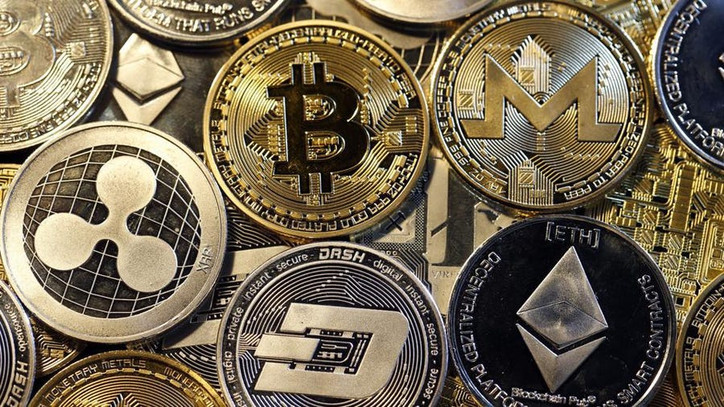Introduction
Only a few currencies saw positive movement during this latest mediocre time period for the crypto market. Nevertheless, the market appears stable overall at current support levels, which is encouraging.
We'll mention a few coins that have recently fared well and are still interesting.
Tether (USDT)
One of the first and most well-known stablecoins — cryptocurrencies that attempt to tether their market value to a currency or other external reference point in order to lessen volatility — was Tether (USDT).
The majority of digital currencies, including popular ones like Bitcoin, have frequently experienced periods of extremely high volatility. Tether and other stablecoins aim to reduce this volatility in order to draw in consumers who may otherwise be wary.
The cost of Tether is directly correlated with the value of the US dollar. Instead of truly converting to fiat money, the system enables users to transfer funds more quickly and easily from other cryptocurrencies back to dollars.
Tether, a cryptocurrency that was introduced in 2014, calls itself "a blockchain-enabled platform...to make it easier to use fiat currency digitally." In reality, this cryptocurrency enables users to use a blockchain network and related technologies to conduct traditional currency transactions while reducing the volatility and complexity frequently associated with digital currencies.
Tether is the third-largest crypto by market capitalization as of the time of writing, with a market cap of $66 billion and a per-token value of $1.00.
USD Coin (USDC)
USD Coin is a stablecoin that uses fiat-collateralized reserves to peg its price to the U.S. dollar. As such, it holds an equivalent amount of fiat money to the total supply of USD Coin in circulation. 2018 saw the introduction of an 8 USD Coin by the Centre Consortium, which also includes Circle and Coinbase. Circle is a regulated stablecoin because it is based in the United States and is subject to regulation as a result. If you wonder where to get USDC stablecoin follow the provided link.
At the time this article was written, USD Coin had a $44 billion market cap and a $1 coin price. In terms of market cap and trading volume, it came in fourth.
Litecoin (LTC)
In 2011, the cryptocurrency Litecoin (LTC) was made as a result of a fork in the Bitcoin network. It was initially developed to satisfy the developers' concerns that the mining process for Bitcoin was becoming more centralized and to make it more difficult for a few major mining organizations to control the market.
The cryptocurrency has now developed into a mineable coin and a peer-to-peer payment system, despite the fact that it finally failed to prevent commercial miners from controlling the majority of Litecoin mining.
As of the time of writing this, LTC has a market cap of $4 billion and a current price of around $59
Toncoin (TON)
A layer-1 blockchain network called TON was first introduced in 2018. The native cryptocurrency of The Open Network's blockchain network is called Toncoin, and TON stands for "The Open Network." Additionally, because TON uses the PoS concept, it is scalable and safe for possibly billions of users.
TON initially encountered some difficulties and difficulties in its early stages. The network's initial main objective was to enable crypto payments via Telegram. When Telegram neglected to disclose the sale of its GRAM tokens worth $1.7 billion, the SEC stepped in to take action. After ultimately losing the initial legal battle, Telegram made the decision to cut ties with TON.
Software engineers kept working on the TON network even after Toncoin and Telegram split. They relaunched in 2020 with the name "NewTon." All of its users benefit from a quick and safe network because of its new and improved operability and scalability.
As of the time of writing this, TON has a market cap of $2.5 billion and a current price of $1.70
Dai (DAI)
DAI is a stablecoin that is soft-pegged to the US dollar. It is the foundation of the MakerDAO lending system and is decentralized, impartial, and collateral-backed. One of the biggest and most well-known dApps currently active on the Ethereum network is MakerDAO.
Anyone with ETH can use the MakerDAO protocol to lend themselves money in the form of the DAI stablecoin. Dai is immune to hyperinflation since it is specifically created to reduce volatility and withstand abrupt price changes. In essence, anyone, anyone can create the Dai stablecoin using cryptographic assets as collateral.
DAI was introduced in 2018 in its current incarnation. As the brand-new Multi-Collateral Dai coin, MakerDAO developed token. This took the place of the earlier model, now known as SAI (Single-Collateral Dai).
Since the introduction of Single-Collateral Dai in 2017, Dai's popularity has increased in tandem with the widespread adoption of stablecoins by industry. Stablecoins are digital assets that work like FIAT currencies and are intended to preserve their value over time. The use of stablecoins has significantly increased, and they are now a crucial component of all DeFi decentralized applications.
As of the time of writing this, DAI has a market cap of $5.4 billion and a current price of $ 1.00




